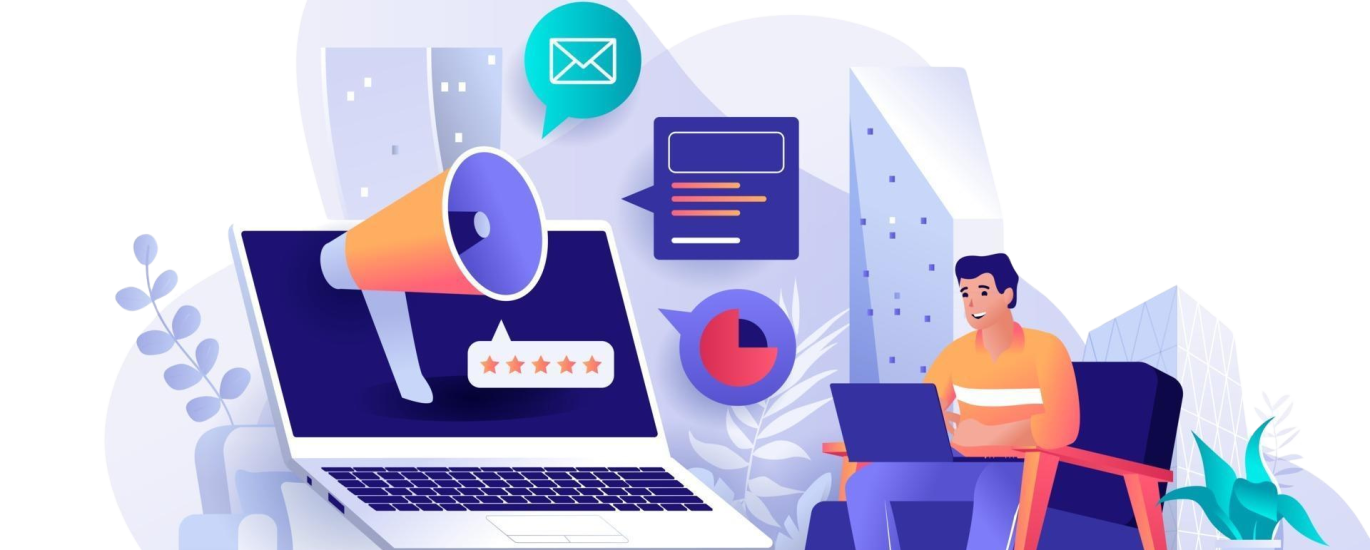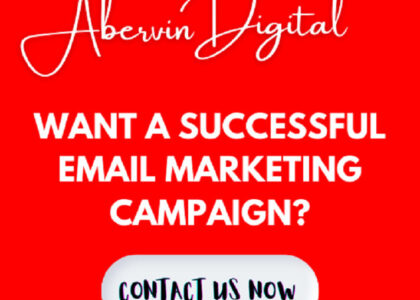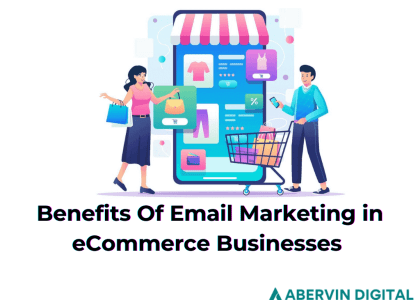If Ecommerce email marketing isn’t generating at least a quarter of your total revenue, something’s off.
We’re not trying to hurt your feelings, we’re just being real. Because right now, top-performing brands are using Ecommerce email marketing to drive 20% to 40% of their total revenue. And no, we’re not talking about big brands with endless budgets. We’re talking about growth-minded brands with smart systems, good offers, and intentional strategy.
Yet somehow, email still gets treated like the dusty “backup plan” while people obsess over TikTok trends and social ads that cost more and convert less. While paid ads are great for grabbing attention, they stop working when the budget runs out. Email sticks around.
And on top of that fact is the fact that email has the highest ROI of any digital channel generating $36 for every dollar you give it. Plus, it is also the ONLY channel where you own the audience, control the message, and build long-term relationships that actually convert without renting space from an algorithm or worshipping Mark Zuckerberg.
You’re not guessing, paying per click or fighting for attention in a 3-second scroll war. You’re creating your own system that delivers when everything else burns out.
So if you’re ready to treat email like the money-printing machine it really is for your Ecommerce business, this blog is your playbook.
We’re going to be talking about real Ecommerce email marketing – about meeting your customer where they are – in their inbox, with the right message at the right moment.
At Abervin Digital, we help ecommerce brands 10X their ROI with ecommerce email marketing but if you’re doing it yourself for now, we’ve created this guide to show you exactly how to do it right in 2025: the strategy, the structure, and the sequences that actually move the needle.
Let’s get into it.
What Is Ecommerce Email Marketing?
Ecommerce email marketing is the use of email to promote products, share brand news, and build relationships with potential and existing customers. It’s you using emails to guide your customer through their entire buying journey from first click to loyal repeat purchases.
While this sounds simple, most brands don’t get it, so they treat email like a loudspeaker blasting a “SALE ENDS TONIGHT” message to their entire list every week and hoping someone bites. But the truth is, Ecommerce Email Marketing should be a conversation.
With ecommerce email marketing, you can can welcome new visitors, follow up when they abandon a cart, recommend related products after a sale, and woo people back when they’ve gone cold. All of it working in sync to acquire, convert, and retain customers – without depending on a Meta ad budget.
Thanks to the nature of the ecommerce world, trust is currency. With rising acquisition costs, people don’t just pull out their wallets on the first visit to your online store. That’s why email marketing for online stores plays such a big role.
Whether it’s product education, social proof, or behind-the-scenes content, email allows you to educate, nurture, and warm up leads over time.
As your business grows, your email list is one thing you actually own where there’s no middleman or gatekeeper – just direct access to your audience whenever you need it. And with this access, email lets you do three high-impact things:
- Acquire leads with incentives (lead magnets) like discounts, guides, checklists or quizzes.
- Convert those leads with smart automations and persuasive campaigns.
- Retain customers with post-purchase communication, product education, and exclusive offers.
That right there is a full-circle growth system in one tool. Let’s see how this plays out in real life.
How Ecommerce Email Marketing Works in Real Life
- A potential customer sees your Instagram ad and lands on your product page.
- They don’t buy, but a pop-up offers 10% off in exchange for their email.
- They sign up. You send a welcome email explaining your mission and bestsellers.
- A few days later, they browse again. You follow up with personalized product suggestions.
- They buy.
- You send a thank-you note, then cross-sell another product.
- A week later, you ask for a review.
- One month later, they get a VIP loyalty offer.
They get an email at each step from when they sign up. This is the power of email marketing for ecommerce businesses that actually works – building relationships, staying top of mind, and increasing customer lifetime value.
One very important thing to consider is every Ecommerce customer goes through a journey. Nobody goes from “Who are you?” to “Here’s my money” in one step. Especially not in 2025, where people are bombarded with ads and options 24/7.
Think of your Ecommerce funnel as your customer journey, just stacked into stages. So to build a real brand (not just rack up random one-off sales) you need to guide your audience through these stages: Awareness → Consideration → Purchase → Loyalty.
What makes ecommerce email marketing so powerful is that it supports each part of that funnel. The right message, at the right moment, delivered straight to their inbox.
Of course, “the right moment” isn’t a guessing game. If you want your emails to land when your customers are most likely to open, click, and convert, timing is everything. We broke down the best send times backed by 2025 data in this guide, so your emails never show up late to the party.
In the next section, we’ll go over how email maps to each part of these stages and how you can set up your business for success with email marketing
Setting Your ECommerce Business Up For Success With Email Marketing
We’re starting this section by mapping customer touchpoints to your ecommerce email marketing strategy because if you want to win in 2025, you can’t just wing it. To really master email marketing for online stores, you need to understand your funnel and more importantly, how email maps to each part of it.
After that, we’ll walk through tools you can use to create and send these emails, plus strategies to build and grow your list so your campaigns actually convert. And if you’re ready to scale faster by bringing in help, here’s a solid breakdown on how to hire email marketing experts who actually deliver.
Let’s get into it.
Understanding Your Ecommerce Funnel
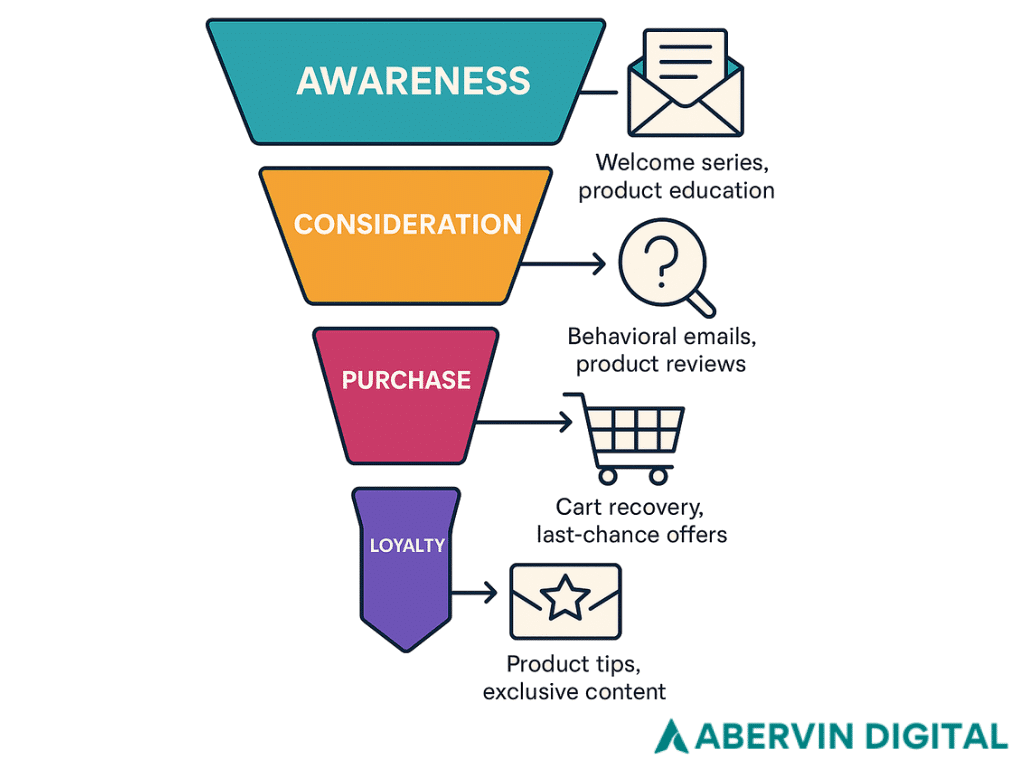
When you understand the different steps people take before and after they buy from you, you can send emails that actually make sense for where they are in that journey. Let’s take a look at how email marketing plays a role at every stage of your customer journey.
The Awareness Stage
This is when someone first discovers your brand maybe by downloading a lead magnet or biting on your FREE offer. They don’t know you so they’re probably not ready to buy yet, but they’re curious.. Your job here is to introduce the brand and give them a reason to stick around. Ecommerce email marketing helps you show up at the right moment with a welcome series, product education, brand story, social proof, and content that warms them up..
The Consideration Stage
Now they’re weighing options, maybe comparing you to others. They’re not ice cold anymore, but they’re not fully sold either. Your job here is to make it easy for them to say yes. Show off what makes you different. Bring receipts. Use behavior-based emails like “Still thinking about this?” or “Here’s how we compare.” Share FAQs, product features, reviews, and user-generated content so they can see real people loving what you offer.
The Purchase Stage
They’re close. Like adding-to-cart close. But maybe something distracted them, or they just need a reminder. This is where ecommerce email marketing earns its ROI. Cart abandonment flows, urgency countdowns, and “last chance” discount emails help close the loop. Make sure your emails are easy to act on. One good email can be the difference between a lost cart and a new customer.
The Loyalty Stage
They bought – yaay. But now’s where you earn the repeat order not ghost them. This is the part most brands skip, and it’s where you win long-term. Send emails that make them feel smart for buying from you. Follow up with tips, tutorials, and thank-yous. Ask for reviews. Offer VIP perks. Make them feel like insiders. A happy customer who comes back is worth way more than chasing a new one.
So with all that in mind, how do you actually pull all this off for your ecommerce business? How do you write all these emails, send them at the right time, and grow your list along the way? That’s where tools come in.
In the next section, we’ll walk through the platforms, software, and strategies that help you run your ecommerce email marketing like a pro, without burning out. Let’s get into it.
Choosing The Best Email Marketing Software for Ecommerce
Not all email marketing software is built with ecommerce in mind, and if you’re serious about scaling, choosing the right ecommerce email marketing platform is non-negotiable. Choosing the best email marketing software for a small business isn’t just a matter of picking the cheapest tool or the one with the prettiest interface. It’s the one that turns browsers into buyers and helps you automate the entire customer journey from click to checkout.
You want tools that personalize emails, track product-level revenue, and keep deliverability strong. Your chosen platform should help you stay top-of-mind, not stuck in the spam folder. To make sure your emails actually reach your customers, follow these email deliverability best practices.
So with dozens of platforms to choose from, we know how confusing it can be and that’s why this section cuts through the noise and lays out exactly what you should be looking for.
We’ll show you what features matter most in 2025, which tools are leading the charge, and how your email marketing platform should evolve as your online store grows. For a deep dive into how to compare tools and pick the best fit for your brand, check out our complete guide to choosing email marketing software.
Our Top 3 ESPs for Ecommerce Email Marketing in 2025
In the highly competitive email marketing software for ecommerce space, three platforms stand out in 2025: Klaviyo, Omnisend, and Mailchimp. Let’s break down what each one brings to the table in 2025.
Klaviyo
Klaviyo is the go-to email and SMS tool for serious ecommerce brands, especially if you’re on Shopify, WooCommerce, or BigCommerce. It’s purpose-built for ecommerce email automation, with powerful segmentation, behavior-based triggers, and predictive analytics.
Want to message people who viewed a product but didn’t buy? Or trigger upsells based on order history? Klaviyo makes it easy. The visual automation builder is intuitive, and nearly every element of a customer’s behavior from clicks and pageviews to cart additions can trigger customized flows.
Klaviyo also supports SMS, allowing brands to build omnichannel automations from one dashboard. In 2025, Klaviyo has continued to evolve with predictive analytics, AI-assisted copywriting, and tighter integrations with third-party review tools, loyalty platforms, and CRMs.
Omnisend
Omnisend is a strong choice if you’re looking for affordable email marketing for ecommerce without sacrificing essential features. With built-in automation for cart recovery, post-purchase follow-up, and product recommendations, it’s great for beginners and small teams.
Its visual builder and pre-built workflows save time, and the SMS capabilities let you build cross-channel campaigns quickly. In 2025, Omnisend has improved its A/B testing and added a much better segmentation based on real-time customer behavior, making it a very worthy alternative for brands looking to move fast without sacrificing too much on features.
Mailchimp
Mailchimp still holds a spot for brands doing more than just ecommerce, like those running blogs or hosting events. While not the most advanced email marketing platform for ecommerce, it’s popular for its simplicity, wide integrations, and email templates.
Mailchimp’s recent updates, especially after joining Intuit, have reintroduced ecommerce-friendly features like product blocks, campaign revenue tracking, and limited automation flows. But for fast-growing brands, Mailchimp might be best as a starter tool before switching to something more robust.
Other Ecommerce-Friendly Platforms
There are several other platforms that can work well for Ecommerce like Drip, ActiveCampaign, Sendinblue (Brevo), and ConvertKit, but they each come with trade-offs.
For example, Drip offers strong automation and visual workflows but lacks deep native Shopify integration compared to Klaviyo. ActiveCampaign is great for segmentation and CRM features but can feel overly complex for lean teams focused solely on Ecommerce.
Brevo is affordable and all-in-one, but its template builder and Ecommerce features are not as intuitive. So, you get the idea.
What to Look for in 2025’s Ecommerce Email Tools
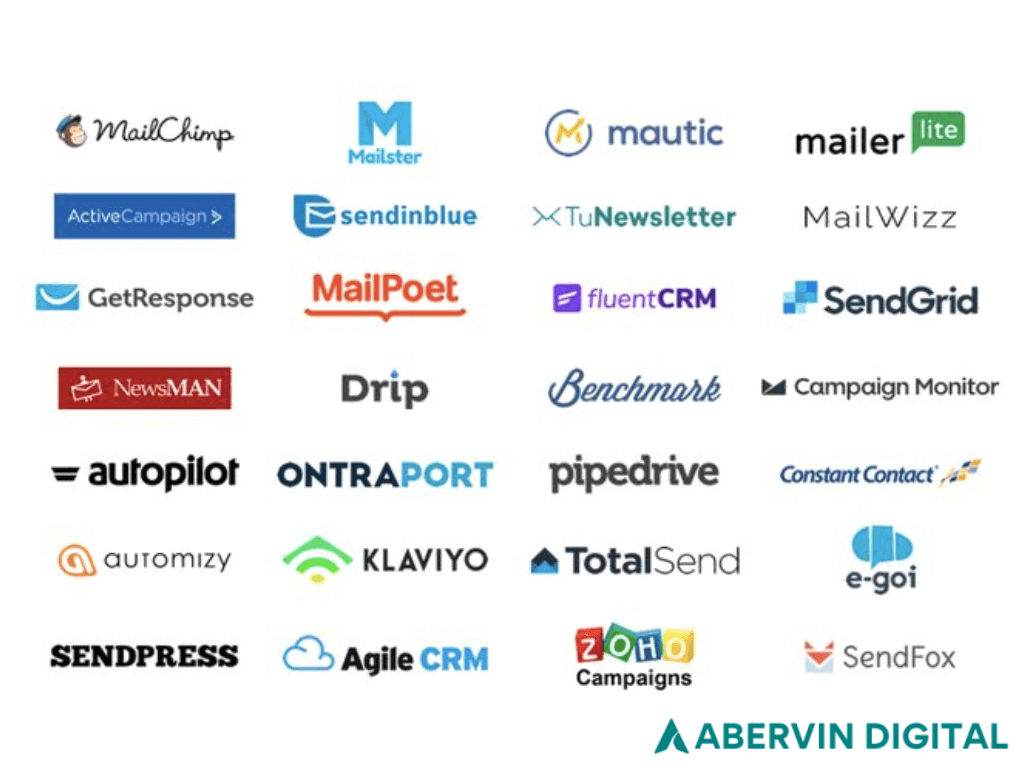
Regardless of the platform, there are a few non-negotiable features that every Ecommerce email platform should have in 2025:
1. Smart Automation and Flow Building
The power of email marketing is in the ability to create timely, relevant messages without manually sending them. So your email marketing platform of choice should have a visual flow builder that lets you map customer journeys clearly – welcome series, browse abandonment, upsells, win-back flows, without getting lost in confusing logic trees. Your platform should also allow for conditional paths (if/then logic), so you can market to people based on how they act or respond.
2. Segmentation and Personalization at Scale
Effective ecommerce email marketing strategies rely on smart segmentation, based on purchase history, location, and product interaction. Advanced platforms now support predictive analytics aka estimating when a customer is likely to buy again or churn so you can proactively engage them.
3. Revenue Attribution and Ecommerce Tracking
If you can’t tell how much money your email campaigns are making, you’re flying blind. Make sure your platform tracks not just opens and clicks, but also add-to-carts, purchases, revenue per recipient, and ROI per flow. Some tools even let you break down revenue by individual product or customer segment, which is very important for sales optimization.
4. Integrations with Your Ecommerce Stack
eCommerce email really works when your chosen platform can integrate smoothly with your Ecommerce platform (Shopify, WooCommerce, etc.), CRM, helpdesk (like Gorgias or Zendesk), reviews tools (like Yotpo or Judge.me), and SMS provider. The more your tools talk to each other, the better your campaigns perform.
5. Compliance and Deliverability Tools
Choose a platform that makes it easy to authenticate your sending domain (SPF, DKIM, DMARC), manage consent, and avoid spam traps. In 2025, inbox providers are stricter than ever on engagement signals, so list hygiene and re-engagement automations are essential. Need help making sure your emails land in the inbox? Start with our email deliverability best practices.
We discuss all this in greater detail in our guide to essential email marketing platform features, including what to look for in automation, segmentation, integrations, and more to future-proof your strategy.
Now that we’ve explored what ecommerce email marketing is, why it matters, and how to set your business up for success – from selecting the right tools to mapping your messages with key moments in the customer journey – let’s talk about the part that moves the needle the most: campaign execution.
Because no matter how smart your strategy is, it’s the actual campaigns that lead to real results. We’re talking about 4 Must-Have eCommerce Email Campaigns that’ll not only boost your revenue but also help you build trust, reduce churn, and keep your brand top of mind long after the first sale.
In the next sections, we’ll look into each of these campaigns, unpacking how they work, when to send them, what to include, and more.
Top 4 Must-Have eCommerce Email Campaigns In 2025
Whether you’re running a new DTC brand or scaling an established online store, these ecommerce email marketing campaigns do the heavy lifting for you, turning casual browsers into loyal, returning buyers. And the best part? Once they’re set up, they run automatically, bringing in revenue while you sleep. Plus, if doing it yourself isn’t realistic, you can just hire an email marketer to handle the heavy lifting.
Let’s start where it all begins: the Welcome Series.
The Welcome Series
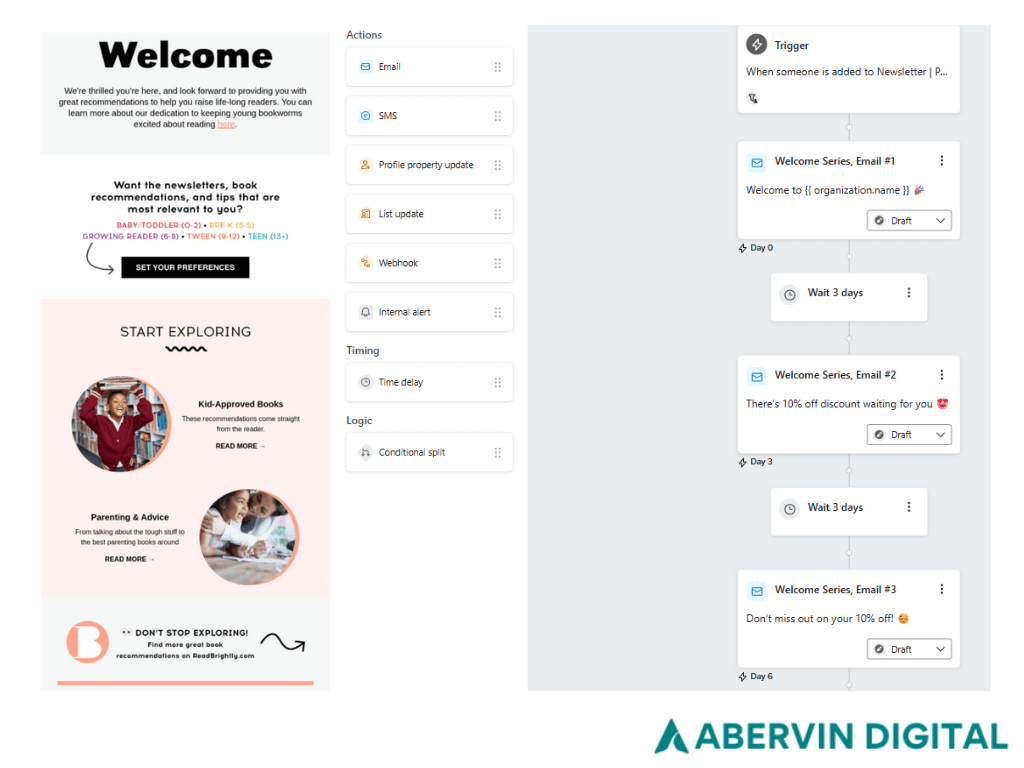
In ecommerce email marketing, your welcome emails are a brand’s first chance to turn a casual subscriber into a paying customer. Brands that do this well set their tone with the customer early, establish trust, and prime their audience for future conversions.
When someone opts into your email list, whether through a pop-up, checkout opt-in, or quiz, they’re doing more than handing you their contact info. They’re raising their hand and saying: “I’m curious. Show me why you’re worth my time.”. Maybe they want a discount, maybe they’re price-checking, or maybe they’re simply curious. Your welcome series bridges that interest gap by introducing your brand in a way that builds real connection.
Yet many stores treat the welcome series as an afterthought, or worse, reduce it to a one-liner and a discount code. And we say worse because, the biggest mistake Ecommerce brands make with their welcome series is jumping straight to the sell. It’s tempting because you want the conversion, and your new subscriber might be primed to buy. But rushing the sale often backfires.
To help you get this right, let’s explore the structure of a high-performing welcome series that nurtures the subscriber into becoming a loyal customer within 3 to 7 days.
Email 1: The Immediate Welcome (0 minutes to 1 hour after signup)
When your first email lands, the subscriber’s mental state is still primed with curiosity. Neurologically, this is when the brain is most likely to remember what you say (known as the primacy effect). Don’t waste it with a plain “Thanks for signing up.”
Instead, this email should:
- Clearly restate the offer (if any) in the subject line and header
- Position your value proposition (e.g., “Handmade. Sustainably Sourced. Always Fair Trade.”)
- Set expectations (how often you’ll email, what kind of content they’ll get)
- Include a soft CTA (shop now, explore your catalog, view customer favorites)
This is a key touchpoint in ecommerce email marketing automation because it sets the tone and builds credibility within the first hour.
Email 2: The Brand Story (24–36 hours later)
So the goal here is to deepen the emotional connection with the client and differentiate your business from competitors. By now, the discount code glow is fading. So your email two has to pivot from “what you’ll get” to “why we exist.” This is where you tell your story. So in your email two, you will;
- Share your founder origin story or your mission
- Highlight your ethos (e.g., cruelty-free, women-owned, carbon neutral)
- Use conversational tone or even video to show the people behind the product
Customers don’t fall in love with your product specs. They fall in love with brand values and identity resonance. If your story feels like relatable, you’ve already increased your chances of conversion and LTV.
Email 3: The Social Proof + Bestsellers (48–72 hours after signup)
By day three, a buyer is either sitting on the fence, overwhelmed by options, or distracted by life – this is one of the most important steps in getting people toward a first purchase because this email cuts through all three scenarios by providing clarity. It’s your chance to show that real people love you and guide new customers to popular products. In Email 3, you feature your bestsellers alongside glowing reviews, user-generated content, or testimonials.
Here’s how you structure that email:
- Mention what customers usually buy first with a clear CTA to shop now with their code
- Showcase top 3–5 products with customer reviews underneath each
- Reinforce your guarantee, return policy, or shipping benefits
If you have influencer content or press features, this is a great place to plug it in without sounding boastful with content that reads like “Don’t Just Take Our Word For It…”
Email 4 (Optional): The Education Moment (Day 4–5)
So on Day 4-5, non-converting subscribers likely have unspoken objections. They’re usually thinking “Will it fit me?”, “Is this legit?”, “How long does shipping take?” or “What if I don’t like it?”. Your goal in this email is to remove their doubts by helping them understand how to use or choose your products.
Here’s what your email #4 should include:
- Video demos, how-to graphics, or comparison charts
- FAQs on returns, delivery, or care instructions
- A soft CTA to explore or ask a question
This email is especially useful for brands with products that require a little guidance like skincare routines, tech gear, or sizing. If you’re in a niche like skincare, pet supplies, tech accessories, or anything that needs onboarding, this is where your brand shows up not just as a seller but also as a guide.
Email 5: The FOMO (Day 6–7)
If they haven’t bought yet on Day 6-7, it might be time to send this final email where you gently encourage them to take action. You’ve built trust. You’ve provided value. Now it’s time to highlight limited stock, expiring discounts, or new arrivals in a way that communicates urgency to your audience.
So here’s what a typical Email #5 should have:
- Mention “last chance” to use the welcome discount (if applicable)
- Low-stock alerts or trending products
- Social proof or urgency copy
Done well, this final email brings it all together: trust, urgency, and a crystal-clear CTA.
And remember: this sequence is one of the highest-ROI email marketing flows available. According to Omnisend, automated welcome emails have a 45.36% open rate and 8.15% click-through rate – far outperforming standard newsletters.
If you’re serious about ecommerce email marketing in 2025, and you want to get it right the first time, hire email marketers who live and breathe lifecycle flows and understand what moves the needle for DTC brands.
The Abandoned Cart Flow
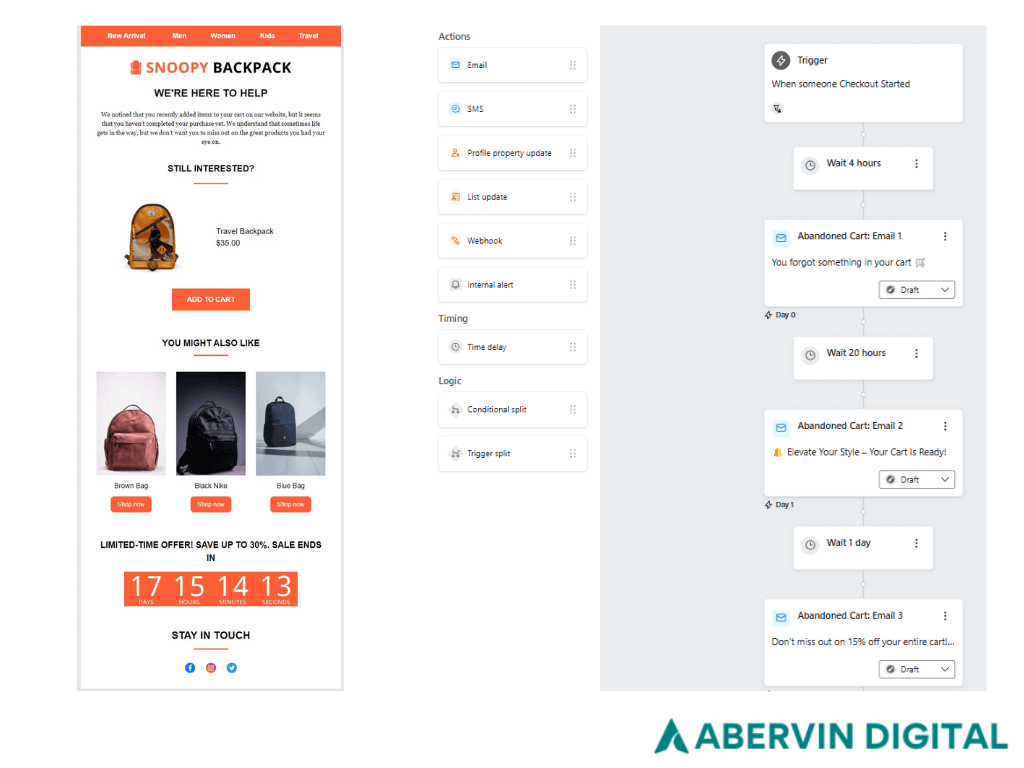
A full cart doesn’t always mean a sure sale. In fact, most people abandon their carts. But the real story isn’t just that people leave, it’s why they leave, and more importantly, how you bring them back.
When someone adds something to their cart, they’re not browsing passively. They’re actively considering your product. The intent is real but then life happens. Distractions pop up. Doubts creep in. The dog barks. The baby cries. The doorbell rings. And just like that, you’re forgotten.
This is where your abandoned cart flow – a must-have for any brand serious about ecommerce email marketing kicks in. The trouble is too many brands treat this flow like a one-and-done Hail Mary. A quick “Hey, you forgot something” with a small discount. That’s not enough anymore.
To really recover lost revenue, your abandoned cart emails must feel like a helpful reminder, not a pushy shout. Everything from timing, tone, psychology, and testing has to point towards you being helpful. Let’s show you what it takes to create abandoned cart emails that not only bring shoppers back but close the deal with confidence.
Email 1: The Gentle Reminder (1 to 3 hours after abandonment)
This is where your recovery effort begins. You don’t want to strike too fast here, or you risk sounding robotic – but if you wait too long, and they’ve already bought elsewhere or lost interest then that sale is gone. So the sweet spot is to send your first abandoned cart email around 1–3 hours after the cart is left behind.
Here’s how your first email should read:
- Friendly subject line that sounds like a human, not a system (“Oops! Did you forget this?” or “Still thinking it over?”)
- A clear image of the product(s) left in the cart
- A soft CTA – something like “View Your Cart” rather than “BUY NOW”
- No discount yet – just a helpful reminder and re-engagement
The key here is tone. You’re not guilt-tripping or begging. You’re acknowledging their interest and inviting them back with care. The tone should feel like a helpful store associate, not a commission-hungry closer.
Email 2: The Value Reframe (24 hours later)
If they didn’t bite on email one, it’s time to shift the message from reminder to reassurance. People abandon carts for more than distraction. They worry about fit, about trust, about price, about whether your brand’s even legit.
How to use this email in your ecommerce email automation strategy:
- Reinforce what makes your product worth it (highlight benefits, materials, or craftsmanship)
- Include customer testimonials or reviews for social proof
- Offer a no-risk guarantee or return policy
- CTA can now be slightly more assertive: “Claim Your Cart” or “Complete Your Purchase”
If your first email was a tap on the shoulder, this one is a confident, empathetic follow-up. You’re saying, “Hey, we get it. Here’s why others loved this and why you might too.”
Email 3: The FOMO Trigger (48 to 72 hours later)
So at Email 3, it’s time to introduce urgency and NO we do not mean those flashing clocks or red alert graphics but with calm, clear signals that time matters. Remember the shopper still wants the product – they just need a little prompt to return to the decision they were already leaning toward. The Fear Of Missing Out is the perfect prompt. Smart brands write recovery emails that reflect this reality.
Here’s how you should structure your third abandoned cart email:
- Mention limited inventory or a popular item that’s trending
- If you offer a time-bound discount, now’s the time to present it (“Your 10% off code expires tonight”)
- Reiterate shipping deadlines (especially useful during holiday or promo windows)
- Add a CTA like “Grab It Before It’s Gone”
Now, just so you know… It’s bad marketing to fake urgency. If you use time-based or stock-based prompts, then make sure the countdown actually expires. Otherwise, you’re better off using authentic urgency signals, like low inventory, limited-time discounts, or the approaching expiration of saved carts.
The Post Purchase Series
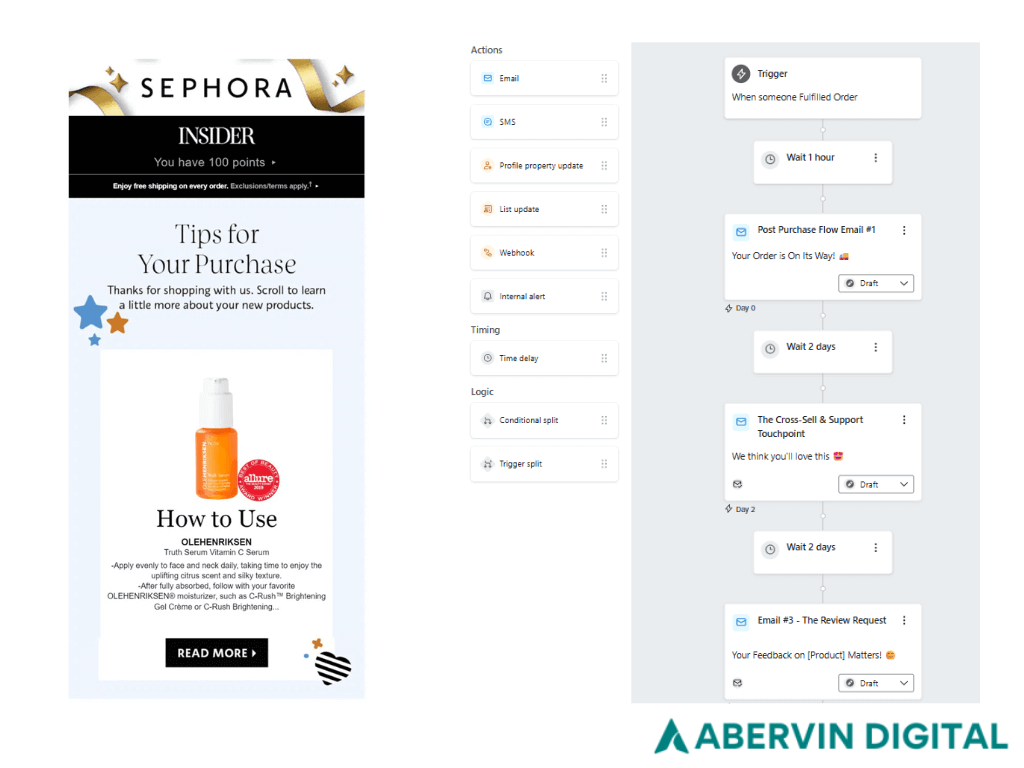
Your customer just bought something. Great! But the relationship doesn’t end there…it actually just started. The moments right after purchase are important because you have a chance to turn a one-time buyer into a lifelong fan. On the flip side if you mess this up, you risk buyer’s remorse, refund requests, or worse: silence.
This is where ecommerce email marketing shines. The best ecommerce brands treat the post-purchase experience as part of the customer journey, not an afterthought. These emails are more than just receipts. They know these are opportunities to show the customer they can be trusted, and pave the way for repeat purchases.
So let’s break down how to build a smart, conversion-friendly post-purchase flow that deepens your relationship with your client and grows revenue on autopilot.
Email 1: The Thank You & Confirmation (Immediately after purchase)
This is your first impression after they’ve spent money. And that matters. Right now, their dopamine is still high because they just bought something they’re excited about. But that excitement can quickly morph into second-guessing. Your job is to reassure them they made the right choice.
Here’s what your first post-purchase email should do:
- Confirm the order with clear item details and expected delivery timelines
- Genuinely thank them for their purchase (not just “Thanks,” but “We’re so glad you chose us.”)
- Include a note on what’s next – shipping updates, packaging info, or what to expect
- Use warm, human tone and possibly even sign off with a real team member name
- Bonus points for a welcome message or quick “getting started” content if applicable
This email sets the tone for your email marketing for online stores and makes your customers feel safe, seen, and valued..
Email 2: The Cross-Sell & Support Touchpoint (2–3 days after delivery)
By now, your product may have arrived or it’s close. This is your window to extend the experience. Think of this as your “We’re still here for you” email. So don’t think of cross-selling as about hard-selling, it’s about smart suggesting.
Here’s what to include in your cross-sell series:
- Product tips or tutorials (especially if it’s something that needs a little onboarding)
- Cross-sell opportunities based on what they bought (think: “People who bought this also loved…” style)
- Offer helpful content like care instructions, style guides, or pairing ideas
- A visible link to support or contact (making sure they feel supported in case something goes wrong)
- Keep the tone helpful, not pushy
Smart cross-selling here doesn’t just increase average order value, it positions your brand as being thoughtful, available and your customers sees you as a go-to brand for solutions.
Email 3: The Review Request (5–7 days after delivery)
Now they’ve had time to try your product. If they’re happy, they might tell a friend but this usually happens quicker if you just ask. Now when you ask, you have a chance to know how good your product is or If something’s off. You don’t want a situation where they quietly walk away so use the review request to catch it early.
Put simply, this email is your moment to ask for feedback, gather social proof, and show customers their voice matters.
Here’s how to structure your review request:
- Start with a soft check-in: “How’s it going with your new ?”
- Invite them to leave a quick review or star rating (make it as easy as possible – one click ideally)
- Consider offering a small incentive (e.g., discount on next order, entry into a giveaway)
- Include recent reviews from other customers as social reinforcement
- Add a PS that links to support in case they had any issues (this reduces negative public reviews)
Remember, most customers won’t leave reviews unless prompted. And they’re far more likely to share when the process is smooth and acknowledged.
Re-Engagement and Win-Back Campaigns
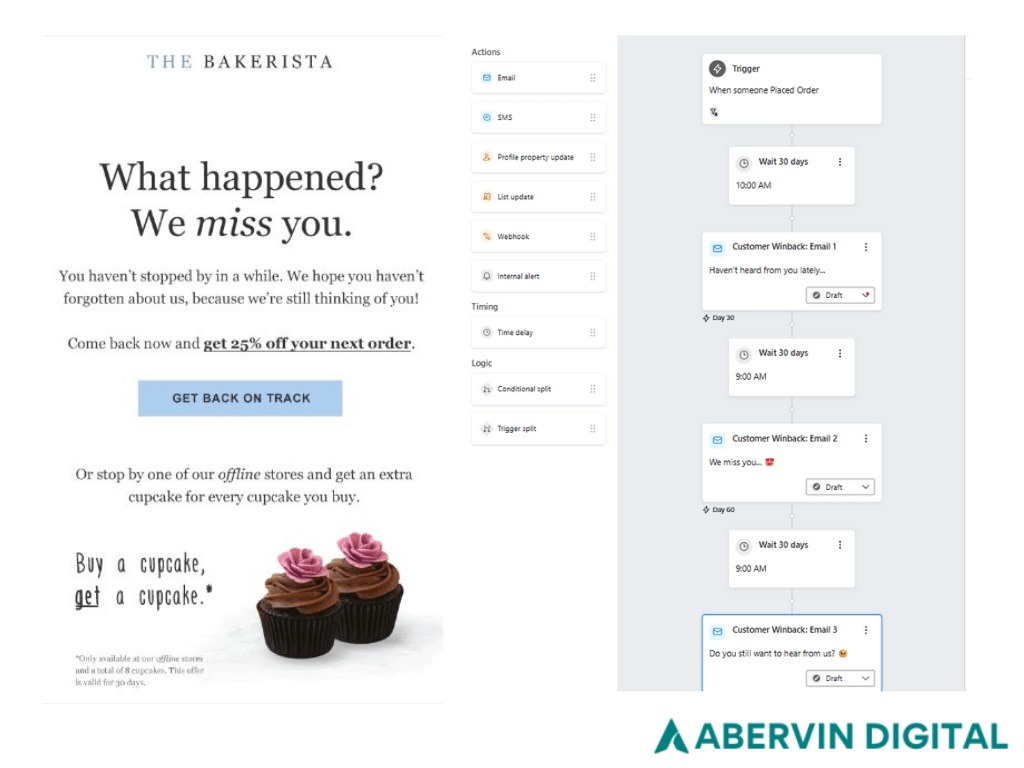
You worked hard to earn that subscriber. Maybe they found you through an ad, opted in for a discount, or shopped with you once and then… silence. Life got in the way. Their inbox got noisy. Or maybe, they just forgot about your business.
This is where re-engagement and win-back flows come in. These aren’t just a last-ditch effort to save a lead. When you do it the right way, flows remind customers why they subscribed in the first place and they can reignite interest, rebuild trust, and recover sales.
But there’s a catch: you have a short window to get them interested again before they become completely unengaged or worse, start harming your deliverability by never opening or clicking your emails.
So, when exactly should you reach out? That depends on your brand’s sales cycle and engagement data. But for most ecommerce stores, the sweet spot is 30, 60, or 90 days of inactivity and the messaging shifts depending on when you catch them.
Let’s walk through what high-performing re-engagement campaigns do well, and how to know when it’s time to prune your list altogether.
Email 1: The “We Miss You” Check-In (30 days of inactivity)
At the 30-day mark, the customer might still remember your brand but they’re drifting. So this is your chance to lightly reintroduce yourself while reminding them of the value you offer. Think of this as a soft reminder, not a sales pitch.
This email should include:
- A warm, human subject line like “Hey, it’s been a while” or “Still here when you’re ready”
- A personalized greeting that references their past activity if possible (e.g., “It’s been a minute since your last visit”)
- A reminder of what makes your brand special – whether it’s ethical sourcing, handmade goods, or fast shipping
- A soft CTA: “Come take a look,” “See what’s new,” or “Get re-inspired”
You’re not asking for a sale here. You’re reminding them of the relationship and planting a seed. Keep the tone friendly, not needy.
Email 2: The “Here’s What You’ve Missed” Recap (60 days of inactivity)
If they haven’t engaged after your first attempt, this next email should shift from emotional reminder to tangible value. The goal now is to catch their attention with newness, relevance, and a reason to come back.
Here’s how to structure it:
- Use a subject line that leans into curiosity: “You’ve missed a lot…” or “The latest drops are in 👀”
- Showcase recent bestsellers, seasonal picks, or limited-edition items
- Include customer reviews or social proof to reinforce excitement
- Add urgency if applicable: “Back in stock,” “Trending now,” or “Limited run”
If you have new content, features, or even a quiz to re-segment them based on current preferences… now’s the time to plug it in. This email says, “We’ve been busy – and you’re still invited.”
Email 3: The Final Win-Back or Farewell (90 days of inactivity)
Three months in, and it’s time for a bold but respectful final ask. At this point, if they don’t open or click, they’re considered disengaged and holding on too tightly can hurt your email deliverability.
So this email serves two purposes: one last chance to win them back and permission to part ways if they’re no longer interested.
Here’s what to include:
- A clear subject line like: “Do you still want to hear from us?” or “Should we say goodbye?”
- A short message thanking them for being part of your journey
- A strong incentive if appropriate: “Here’s 15% off to welcome you back”
- A clear CTA: “Stay subscribed” or “Yes, keep me in”
- And importantly: A link to unsubscribe or update preferences
These emails work best when they’re transparent, human, and respectful. You’re not begging, you’re giving them control. And just so we are clear, holding onto disengaged subscribers beyond 90–120 days can seriously hurt your sender reputation, lower your open rates, and increase your spam complaints.
So you have to prune your list if their inbox provider consistently throttles or blocks your messages or they haven’t opened or clicked any emails in 90+ days despite a full re-engagement sequence or if they’re bouncing or marking your emails as spam
And that’s a wrap on mastering Ecommerce email marketing in 2025.
We cover the core benefits and tools for ecommerce brands, but if you sell homes not products, check out our guide on real estate email marketing in 2025 for agent-specific tactics.
If you’ve made it this far, one thing is clear: you’re not just here to “send newsletters.” You’re here to build a system that grows your brand, nurtures your audience, and turns one-time buyers into loyal customers who stick around, spend more, and share your brand with others.
In 2025, smart brands don’t treat email like an afterthought. They treat it like an owned asset – the single highest-ROI channel in their entire marketing stack.
We provide a deeper breakdown of strategy, flows, and more to help you scale your ecommerce business, check out our post on 11 Expert-Approved Secrets to Scale Ecommerce.
Now, don’t let what you’ve just read sit in a tab you forget about. Pick one thing today and start. Build email drip campaigns. Fix your cart abandonment. Rewrite your post-purchase emails to feel like a conversation, not a confirmation. Need help bringing it all together?
At Abervin Digital, we help Ecommerce brands scale with strategy-first email marketing that works even when your ads don’t. Whether you’re after better flows, Klaviyo clean-ups, or a full-funnel email roadmap that converts… we’re your unfair advantage. Contact us at +1 (720) 583-5547 Or visit abervindigital.com to explore our pricing and packages.


